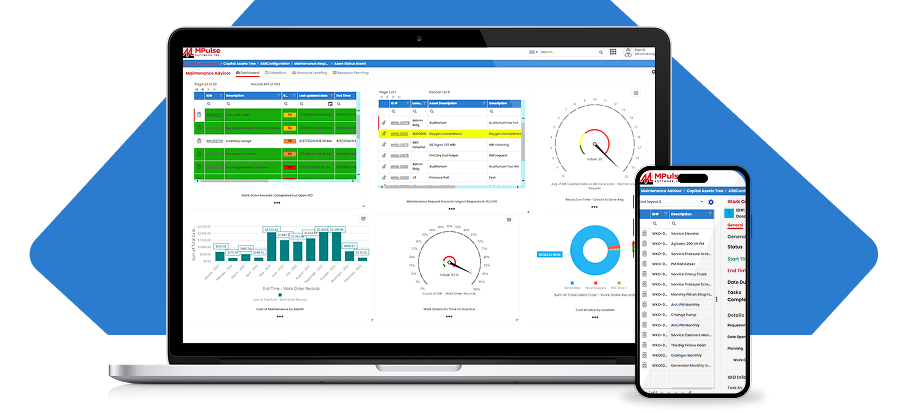CMMS software does more than keep your work orders organized and your team on schedule. It also helps you answer the deeper questions like, “How do I measure effectiveness of preventive maintenance?”
Creating reasonable maintenance management benchmarks help you evaluate your team’s performance. Firstly, you start by measuring your team’s metrics. Secondly, you evaluate your company’s performance by comparing your metrics and processes with those of other organizations.
Maintenance Benchmarking and Best Practices
Using benchmarks, you can identify best practices that drive the metrics. Start by using your CMMS data to measure your team’s current key performance indicators (KPIs) and create a baseline.
Then, research your industry’s benchmarks to see how you’re performing and where you should look for improvements. You can find benchmarks from industry associations, maintenance journals, benchmark databases, and other sources. Additionally, use your professional network to find common benchmarks that your industry uses.
For example, common benchmarks in manufacturing include:
- Planned maintenance tasks vs. total maintenance tasks
- Planned and scheduled maintenance as a % of hours worked
- Unplanned downtime
- Reactive maintenance tasks
- Maintenance overtime
- Work orders reworked as a percentage of total work orders
- Training
- Safety
Benchmarking in Facilities Management
Facilities management maintenance has its own benchmarks. Like manufacturing, you also start with your CMMS data to see where you are. Then you compare your data with similar organizations.
The facility management benchmarking process can include:
- Space utilization
- Facility operating costs by type
- Service provider performance
- Overtime
- Occupant satisfaction
- Planned maintenance tasks vs. total maintenance tasks
- Facility condition
- Sustainability criteria
- Facility safety
- Environmental control
- Business metrics (facility cost as % of total payroll, sales, etc.)
Next Steps
The next step is to analyze your performance versus the top performers. Make sure you dig deeper than the numbers—because processes, workflows, and other factors can affect these KPIs. As a result, you should understand how those numbers are calculated to make sure you’re making a fair comparison.
Then, based on your team’s performance and the industry standards, use your benchmarks to determine realistic KPI goals for your organization. Also, create a reasonable timeline with goal-based milestones and efficiency goals. (Check out our earlier blog series for more information about the steps involved.)
Above all, it’s vital to strategize about new workflows and processes, adjustments in data collection or software, or training plans. Need more information on creating reasonable benchmarks? Contact us. We’re here to help.


